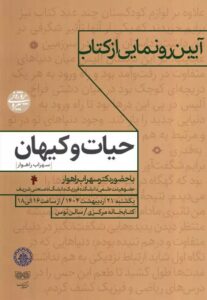Semianr1:
Mohammad Hossein Namdar
Department of Physics, Sharif University of Technology
One-Loop Matter Power Spectrum in Poisson and Monge–Ampère Gravity
سمینار ۲ :
Mohammad-Reza Ebrahimi
Department of Physics, Sharif University of Technology
شبیهسازی تشکیل ساختار با استفاده از کد Gevolution در حضور ماده تاریک فازی
Abstract 1: We investigate the growth of cosmic structures in the framework of Monge–Ampère gravity, a nonlinear generalization of Newtonian (Poisson) gravity based on the determinant of the potential’s Hessian. Using Eulerian perturbation theory, we extend the analysis of structure formation beyond the linear regime and derive the matter power spectrum up to one-loop order. This approach enables a direct comparison between the standard Poisson closure and the Monge–Ampère dynamics, revealing how nonlinear mode couplings modify the clustering of matter on mildly non-linear scales. By quantifying these corrections, we explore the imprint of Monge–Ampère nonlinearity on the evolution of density fluctuations and on the emergence of large-scale structures such as filaments and halos. This study provides a self-consistent framework to test alternative gravitational closures and their role in shaping the cosmic web.
چکیده ۲: در مدل ماده تاریک فازی (FDM)، ماده تاریک از اکسیونهای فوقسبک تشکیل شده است. شبیهسازیهای تشکیل ساختار در حضور FDM که تا بهحال انجام شدهاند بر پایهی گرانش نیوتنی بودهاند. کد Gevolution یک کد شبیهسازی N-ذرهای است و برخلاف دیگر شبیهسازیهای موجود بر پایه نسبیتعام بوده که میتواند نتایج جالبی را به دنبال داشته باشد. در این سمینار ابتدا نگاهی به مدل ماده تاریک فازی میاندازیم سپس به بررسی تشکیل ساختارهای کیهانی در حضور FDM با شبیهسازی Gevolution میپردازیم.
یکشنبه 11 آبان 1404، ساعت 15:00
Sunday 2 November 2025 – 15:00 Tehran Time
Hybrid Seminar
دانشکده فیزیک – آمفی تئاتر – تالار جناب /Physics Department – Amphitheater – Jenab Hall
https://vc.sharif.edu/ch/cosmology
گزینه ورود به صورت مهمان – Enter as a Guest

